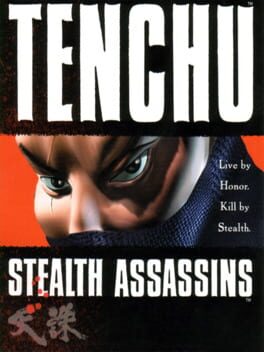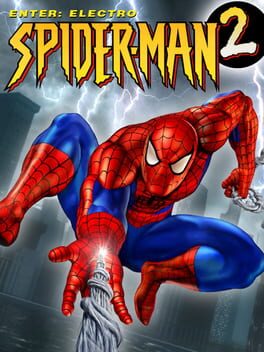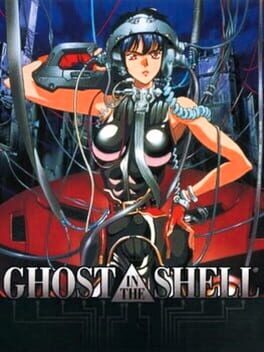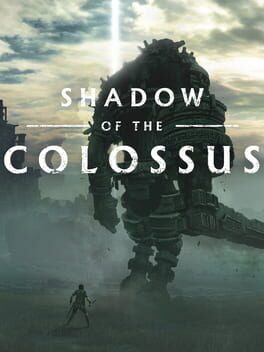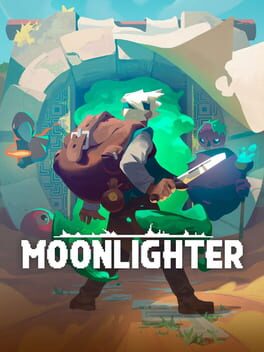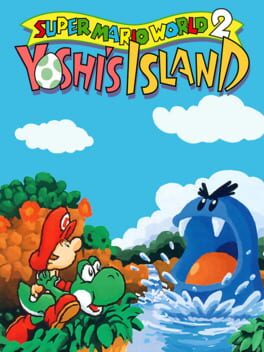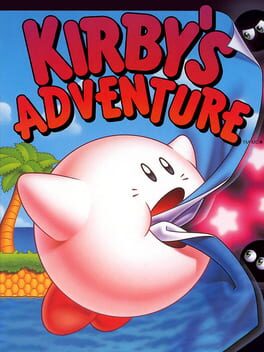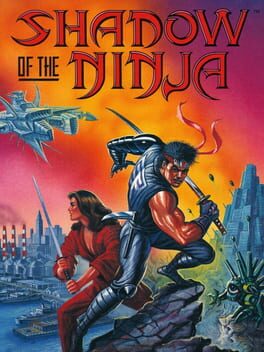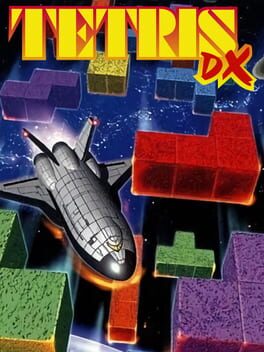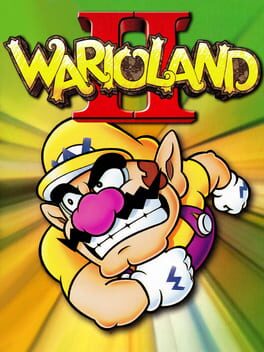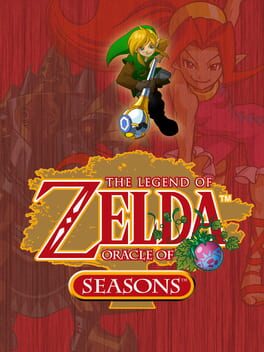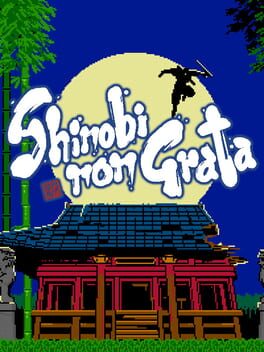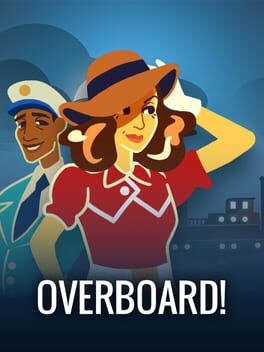xandasreborn
365 Reviews liked by xandasreborn
Ninja Warriors
1994
This is a sequel that feels like a leftover of the first game. The story is not as interesting as the first game, and the villains are some of the most "B-list" villains in the web-head's gallery. The stages are more generic and somewhat confusing in the objectives presented to advance. It's a good game, but it's not better than the first one.
Super Metroid
1994
Ghost in the Shell
1997
Seems like a twisted joke that one of the action games from this era that ends up controlling the most fluidly is the one where you’re piloting a spider-tank- it’s the humans of this generation that you’ll need to get a license to operate. Finds a very particular balance between rigidity of tank controls and the ease of circle strafing, and combined with the ability to transition between (almost) every surface, it’s ended up being some of the most fun I’ve had just controlling a character in 3D space. Came away really liking the conspiratorial feeling of dodging enemy fire by totally inverting my angle-of-approach and entering fights by walking in on the ceiling (would love to see another game pick up where this left off).
Think the highlights are some of the densely-packed later stages, which hold up remarkably well thanks to the fact that the game will seamlessly transition from 3rd to 1st person if the area you’re in gets too cramped, and an early-game level where you’ll race against the clock to destroy explosive barrels in an open-ended environment. The timer here is tight enough that there’s some genuine decision-making in finding the best ways to cut through the level and in deciding what shot type to use: spend a few seconds and charge your lock-on or use a limited-use grenade to clear the objective? It’s a great pressure that’s surprisingly absent in the rest of the levels, free to move through them as cautiously as you want. Doubly weird given how the narrative keeps presenting these ticking clocks, with escaping suspects to catch and reactor meltdowns to avert, that have no bearing on the scenarios themselves.
Speaks to a general sense that this great movement was slotted into a game that didn’t quite know how to test it: Hard to believe that the fight against a rival Fuchikoma, which can scale walls as nimbly as you can and cycles through a number of projectile attacks that can track the player, is in the same title where so many of the bosses only entail that you circle-strafe around them and hold the lock-on button to win- not even leading their shots to throw off the player’s movement: just complete non-entities.
It’s further illustrated by its last level, a straightforward gauntlet through a bunch of enemies and a final boss that could function in almost any other action game, none of the hazards capitalizing on the unique qualities here. Probably a lot to expect from a licensed game, but the action is so far removed from any facet of the Ghost in the Shell series that I sort of wished that the devs had been able to ditch the IP entirely, free to construct whatever abstract and outlandish obstacles they wanted.
As with a lot of the middle-of-the-road arcade games I’ve talked about, the fact that its best ideas are still lying dormant isn’t some cardinal sin; start this in the evening, and let its novel movement system and pulsing DnB soundtrack hold you over till sunrise- maybe daydream about what it could be in the aftermath.
Think the highlights are some of the densely-packed later stages, which hold up remarkably well thanks to the fact that the game will seamlessly transition from 3rd to 1st person if the area you’re in gets too cramped, and an early-game level where you’ll race against the clock to destroy explosive barrels in an open-ended environment. The timer here is tight enough that there’s some genuine decision-making in finding the best ways to cut through the level and in deciding what shot type to use: spend a few seconds and charge your lock-on or use a limited-use grenade to clear the objective? It’s a great pressure that’s surprisingly absent in the rest of the levels, free to move through them as cautiously as you want. Doubly weird given how the narrative keeps presenting these ticking clocks, with escaping suspects to catch and reactor meltdowns to avert, that have no bearing on the scenarios themselves.
Speaks to a general sense that this great movement was slotted into a game that didn’t quite know how to test it: Hard to believe that the fight against a rival Fuchikoma, which can scale walls as nimbly as you can and cycles through a number of projectile attacks that can track the player, is in the same title where so many of the bosses only entail that you circle-strafe around them and hold the lock-on button to win- not even leading their shots to throw off the player’s movement: just complete non-entities.
It’s further illustrated by its last level, a straightforward gauntlet through a bunch of enemies and a final boss that could function in almost any other action game, none of the hazards capitalizing on the unique qualities here. Probably a lot to expect from a licensed game, but the action is so far removed from any facet of the Ghost in the Shell series that I sort of wished that the devs had been able to ditch the IP entirely, free to construct whatever abstract and outlandish obstacles they wanted.
As with a lot of the middle-of-the-road arcade games I’ve talked about, the fact that its best ideas are still lying dormant isn’t some cardinal sin; start this in the evening, and let its novel movement system and pulsing DnB soundtrack hold you over till sunrise- maybe daydream about what it could be in the aftermath.
sinto as mesmas emoções da época que joguei pela primeira vez o original, a morte de cada colosso sempre me deixa triste. esse jogo é pura arte, o vazio, a tristeza silenciosa e toda ambientação são incríveis e mexe com nossa imaginação, só se ouve o barulho do vento e de Wander com o Agro, antigamente isso me dava agonia, todo esse ambiente vasto extremamente solitário, agora me encanta de uma certa forma. Shadow of the Colossus é perfeito e com toda certeza ainda vou jogar muitas vezes.
Moonlighter
2018
I found out about this game when a friend said he got it for free on the Epic Games store. I took a glance over it and saw dungeons, and since I liked Zelda I thought I'd like this one too. Keep in mind that this is the first roguelike I played and I knew nothing about the genre. Well... the word that describes this game for me is underwhelming.
In Moonlighter you have 5 mysterious dungeons which we know nothing about. Since the main character owns a store, your job will be to explore the dungeons, discover the secret behind them and make some money selling the stuff you find along the way. Each dungeon is made of 3 levels, each one with increased difficulty and thus better loot. Levels 2 and 3 of every dungeon are behind a mini boss and, to unlock another dungeon, level 3 has a final boss. You start the game with nothing besides a simple sword and a store to sell the items and the progression is made through the money you make selling the items on your store.
Unfortunately this game felt unbalanced to me. It takes a while to beat the first dungeon and, after beating it, I felt like the game would step up and only get better. That didn't happen. The first boss is difficult and requires you to carefully analyze its patterns to avoid taking damage and dying. But that's all the challenge the game provided for me. To progress in the dungeons you need to upgrade your equipment, obviously. But the mini bosses are so tanky that if you want to beat the dungeon you need to get the full equipment, and after you do that the final bosses present no challenge at all.
The second problem then arises. To get the full equipment you need: (i) items for the smith, (ii) gold to pay the smith. So you'll be going back and forth repeating the same cycle of: going to the dungeon, getting as much stuff as you can, selling them, repeat. It gets tiring pretty quickly, for the game doesn't incentivize exploration and the enemies are very similar throughout the whole playthrough. The good thing is that the higher the dungeon the more money you get with less trips. So it gets progressively faster to repeat this cycle but you have no incentive to beat previous dungeons, only if you really want a specific piece of equipment.
The final problem for me is the dungeons. They are boring, to put simply. They all have the same layouts only varying the theme of the dungeon, they are small, the enemies are very similar and there's an annoying inventory gimmick: you need to think about the placement of the items on your bag before leaving the dungeon. It is by far the most unnecessary thing in this game as it servers no purpose at all. At one point there is a way to completely neglect this whole gimmick so it's just a waste of time.
I think I have to talk about the store management portion of the game. The only thing the items do for you in this game is to improve you equipment. If the item doesn't do that it serves no purpose other than to be turned into gold. I wish I knew that when I started playing because I kept saving the rare items thinking they could be used to something. The store management then is basically a guess the price minigame. You have an item, how much do you think it's worth? If you put the right price people buy it, if you don't, they don't buy it. That's it. To try to mix things up a little, some clients can ask you to slay some monsters or bring them certain items in exchange for a bunch of money, but again there's no incentive for doing that. The dungeons are random and the last thing you want in this game is to go around searching for some specific mobs or items. It also doesn't matter if you do these side quests or not so it is another pointless gimmick.
Where the game shines in my opinion is on the style. The edgeless and round pixel art is fun and pleasing to look at. The music is charming and peaceful. As for the gameplay it is fluid due to the (overpowered) dash, it only gets repetitive quickly. There's also a pet gimmick worth mentioning, where some mobs can drop eggs and after hatching them you get a mini version of that monster that helps you.
I really wanted to like this game but unfortunately I can't. Despite being visible the amount of care and passion that went into this project, the design philosophies are questionable. It had a lot of potential but the execution is underwhelming.
I still have to finish the new game plus. I'll be back here after I finish it.
In Moonlighter you have 5 mysterious dungeons which we know nothing about. Since the main character owns a store, your job will be to explore the dungeons, discover the secret behind them and make some money selling the stuff you find along the way. Each dungeon is made of 3 levels, each one with increased difficulty and thus better loot. Levels 2 and 3 of every dungeon are behind a mini boss and, to unlock another dungeon, level 3 has a final boss. You start the game with nothing besides a simple sword and a store to sell the items and the progression is made through the money you make selling the items on your store.
Unfortunately this game felt unbalanced to me. It takes a while to beat the first dungeon and, after beating it, I felt like the game would step up and only get better. That didn't happen. The first boss is difficult and requires you to carefully analyze its patterns to avoid taking damage and dying. But that's all the challenge the game provided for me. To progress in the dungeons you need to upgrade your equipment, obviously. But the mini bosses are so tanky that if you want to beat the dungeon you need to get the full equipment, and after you do that the final bosses present no challenge at all.
The second problem then arises. To get the full equipment you need: (i) items for the smith, (ii) gold to pay the smith. So you'll be going back and forth repeating the same cycle of: going to the dungeon, getting as much stuff as you can, selling them, repeat. It gets tiring pretty quickly, for the game doesn't incentivize exploration and the enemies are very similar throughout the whole playthrough. The good thing is that the higher the dungeon the more money you get with less trips. So it gets progressively faster to repeat this cycle but you have no incentive to beat previous dungeons, only if you really want a specific piece of equipment.
The final problem for me is the dungeons. They are boring, to put simply. They all have the same layouts only varying the theme of the dungeon, they are small, the enemies are very similar and there's an annoying inventory gimmick: you need to think about the placement of the items on your bag before leaving the dungeon. It is by far the most unnecessary thing in this game as it servers no purpose at all. At one point there is a way to completely neglect this whole gimmick so it's just a waste of time.
I think I have to talk about the store management portion of the game. The only thing the items do for you in this game is to improve you equipment. If the item doesn't do that it serves no purpose other than to be turned into gold. I wish I knew that when I started playing because I kept saving the rare items thinking they could be used to something. The store management then is basically a guess the price minigame. You have an item, how much do you think it's worth? If you put the right price people buy it, if you don't, they don't buy it. That's it. To try to mix things up a little, some clients can ask you to slay some monsters or bring them certain items in exchange for a bunch of money, but again there's no incentive for doing that. The dungeons are random and the last thing you want in this game is to go around searching for some specific mobs or items. It also doesn't matter if you do these side quests or not so it is another pointless gimmick.
Where the game shines in my opinion is on the style. The edgeless and round pixel art is fun and pleasing to look at. The music is charming and peaceful. As for the gameplay it is fluid due to the (overpowered) dash, it only gets repetitive quickly. There's also a pet gimmick worth mentioning, where some mobs can drop eggs and after hatching them you get a mini version of that monster that helps you.
I really wanted to like this game but unfortunately I can't. Despite being visible the amount of care and passion that went into this project, the design philosophies are questionable. It had a lot of potential but the execution is underwhelming.
I still have to finish the new game plus. I'll be back here after I finish it.
This game is great, there isn't much more to say about it.
It is easily one of the top 5 SNES games. The hand-drawn style of the game is done so well, paired with the iconic soundtrack you'll find a perfect match of style and gameplay.
While playing you will have a rich experience for there's a variety of pretty much everything in this game. First one important to mention is the mechanics because they went crazy with Yoshi. Aside from the mechanics used in Super Mario World you also have a delay from falling and a shooting gimmick. Those provide one of the best progressions and level design I've played in a Super Mario game. There's puzzle levels, hard platforming levels, auto scroll levels and combat focused levels. Every level has its special place and you'll hardly get weary of them. The variety of scenarios, enemies, and animations makes it definitely the best Super Mario game I played. I also love the boss battles. Here they are memorable in contrary of Super Mario World where the only memorable boss battle for me is the final one.
The baby Mario gimmick can be annoying at times but this is by far the easiest classic Super Mario game so it's not a big deal. Because of baby Mario you can take "infinite" damage so here the challenge is gonna be platforming your way without falling into pits. I can see someone getting bored by the design filled with pits, but the auto save (aside from providing a more free experience because you don't need to do a lot in one sitting or look for save points) makes you more carefree about lives, so when you lose you don't get so frustrated.
Overall a masterpiece. If you have a hard time with other entries of the series due to their difficulty I highly recommend this game. It is cute, it is easy and it is iconic.
It is easily one of the top 5 SNES games. The hand-drawn style of the game is done so well, paired with the iconic soundtrack you'll find a perfect match of style and gameplay.
While playing you will have a rich experience for there's a variety of pretty much everything in this game. First one important to mention is the mechanics because they went crazy with Yoshi. Aside from the mechanics used in Super Mario World you also have a delay from falling and a shooting gimmick. Those provide one of the best progressions and level design I've played in a Super Mario game. There's puzzle levels, hard platforming levels, auto scroll levels and combat focused levels. Every level has its special place and you'll hardly get weary of them. The variety of scenarios, enemies, and animations makes it definitely the best Super Mario game I played. I also love the boss battles. Here they are memorable in contrary of Super Mario World where the only memorable boss battle for me is the final one.
The baby Mario gimmick can be annoying at times but this is by far the easiest classic Super Mario game so it's not a big deal. Because of baby Mario you can take "infinite" damage so here the challenge is gonna be platforming your way without falling into pits. I can see someone getting bored by the design filled with pits, but the auto save (aside from providing a more free experience because you don't need to do a lot in one sitting or look for save points) makes you more carefree about lives, so when you lose you don't get so frustrated.
Overall a masterpiece. If you have a hard time with other entries of the series due to their difficulty I highly recommend this game. It is cute, it is easy and it is iconic.
Kirby's Adventure
1993
The first Kirby game I finished and for the NES it is an impressive game. For the different enemies, power ups and the various scenarios throughout the game, it can't be denied that this was amazing for the console. But if this was made for the SNES it would probably be way better.
My complaints here are about the controls. The game in general isn't optimized so when there's too much stuff on the screen it will also have frame drops. These frame drops paired with the controls that can't process fast inputs make the game feel janky and I died a lot on the pits due to that.
As a platformer I'm not a big fan of the design. Kirby's ability to fly can be used to cheese a lot of levels here so there isn't a sense of challenge. The screen is also small so it felt claustrophobic as if there wasn't enough space to jump and fight the enemies properly.
Aside from that the game is cool. I liked the boss fights, the music, the art style and I also find interesting how the variety of power ups could provide one of the best replay abilities in a game I've played. Unfortunately I'm not hyped to go for 100%, maybe I'll be with the next titles but not for this one.
My complaints here are about the controls. The game in general isn't optimized so when there's too much stuff on the screen it will also have frame drops. These frame drops paired with the controls that can't process fast inputs make the game feel janky and I died a lot on the pits due to that.
As a platformer I'm not a big fan of the design. Kirby's ability to fly can be used to cheese a lot of levels here so there isn't a sense of challenge. The screen is also small so it felt claustrophobic as if there wasn't enough space to jump and fight the enemies properly.
Aside from that the game is cool. I liked the boss fights, the music, the art style and I also find interesting how the variety of power ups could provide one of the best replay abilities in a game I've played. Unfortunately I'm not hyped to go for 100%, maybe I'll be with the next titles but not for this one.
Shadow of the Ninja
1990
In the previous review I did of Ninja Gaiden Shadow, I had pointed out that that game was basically just a port of Shadow of the Ninja, despite it having elements from the Ninja Gaiden series thrown in, making it feel less and less like a Ninja Gaiden game as a result, and yet, still carrying the same spirit as one of those games. I ended up having a pretty good time with it, and I said at the end of that review that I would like to actually check out the original game to see how it was as well. So, instead of waiting forever to do that, I decided to get to it right away, and now that I have played through it, how was it? Well, it was actually pretty good, and I had an enjoyable time with it. However, that is about all I can say about it on a surface level, which is an issue I will be getting into later, but still, for being a game that I could just easily load up on Switch Online and blaze through in a half-hour, it was entertaining enough to where I could recommend it.
The story is your usual “bad guy takes over the world” story, except this one takes place in 2029, so it’s cool to see this is where we will be at in 6 years, the graphics are pretty good, carrying the same style that other, similar games from Natsume that I have covered and seen in the past, but they do look generic in comparison to plenty of other titles, the music is pretty good, giving that good ol’ 8-bit action vibe that you would hope would be there, but it doesn’t stand out too much when compared to other tracks from other games, the control is solid all around, with no real issues with movement, attacking, or what have you, even if going up and down bars can be a little awkward at first, and the gameplay is fun and action-packed enough for the half-hour that it will take you to beat it, and that is good enough for me at least.
The game is your average NES 2D side-scrolling action platformer, where you take control of either Hayate or Kaede, go through several side-scrolling levels, take down all of the enemies and obstacles that you come face to face with using either regular or special attacks, gather additional weapons like a kusarigama, shurikens, and grenades, as well as health items along the way, and take on several tough, yet fair bosses on your journey. It all functions about as well as your average NES game would, and there is enough here to keep you entertained for a good while.
However, here is the thing: the only problem that I have with this game is that it is way too basic. There is nothing here that makes this game stand out when compared to other NES titles, not just in terms of the gameplay, but also in terms of the graphics. They make the game blend in not just with many other NES titles, but also even other Natsume titles, like Journey to Silius, which has pretty much the exact same graphical style as this game. Now, once again, I must stress, just because a game has plenty of generic elements, that doesn’t make it bad at all, especially if a first-time player hasn’t experienced many other games with this type of style. That being said, if you are looking for a good ninja related NES game to play, just stick with Ninja Gaiden.
Speaking of which though, I reiterate that I am happy that I did play this thanks to what Ninja Gaiden Shadow was supposed to be, and in comparison, now that I have played the two of them, I can definitely see how they are extremely similar. Of course, there are elements about each game that make it somewhat unique when compared to each other, but for the most part, it is the same game at its core. So, at the end of the day, you could play either one and get about the same experience, but from my experience, I would just say to play through Shadow of the Ninja, as it is obviously the better game, even though I did find both of the games to be good.
Overall, despite being yet another generic NES platformer, it is still a pretty well made generic NES platformer, one that I enjoyed playing for the first time, and one that i may go back to at some point if I have nothing better to do. I would recommend it for those who are looking for something new from the NES to play, while also not taking too much time to complete, but otherwise, there are plenty of other options that would be better than this. So, now after beating this game, I have played through three separate ninja games in the past week, and if I play one more, then I am gonna have a ninja overdose, and nobody wants that.
Game #308
EDIT: I just posted a review of this game, and all of a sudden, a remake is announced. I don't know what cosmic powers I have to have made that happen, but either way, you're welcome.
The story is your usual “bad guy takes over the world” story, except this one takes place in 2029, so it’s cool to see this is where we will be at in 6 years, the graphics are pretty good, carrying the same style that other, similar games from Natsume that I have covered and seen in the past, but they do look generic in comparison to plenty of other titles, the music is pretty good, giving that good ol’ 8-bit action vibe that you would hope would be there, but it doesn’t stand out too much when compared to other tracks from other games, the control is solid all around, with no real issues with movement, attacking, or what have you, even if going up and down bars can be a little awkward at first, and the gameplay is fun and action-packed enough for the half-hour that it will take you to beat it, and that is good enough for me at least.
The game is your average NES 2D side-scrolling action platformer, where you take control of either Hayate or Kaede, go through several side-scrolling levels, take down all of the enemies and obstacles that you come face to face with using either regular or special attacks, gather additional weapons like a kusarigama, shurikens, and grenades, as well as health items along the way, and take on several tough, yet fair bosses on your journey. It all functions about as well as your average NES game would, and there is enough here to keep you entertained for a good while.
However, here is the thing: the only problem that I have with this game is that it is way too basic. There is nothing here that makes this game stand out when compared to other NES titles, not just in terms of the gameplay, but also in terms of the graphics. They make the game blend in not just with many other NES titles, but also even other Natsume titles, like Journey to Silius, which has pretty much the exact same graphical style as this game. Now, once again, I must stress, just because a game has plenty of generic elements, that doesn’t make it bad at all, especially if a first-time player hasn’t experienced many other games with this type of style. That being said, if you are looking for a good ninja related NES game to play, just stick with Ninja Gaiden.
Speaking of which though, I reiterate that I am happy that I did play this thanks to what Ninja Gaiden Shadow was supposed to be, and in comparison, now that I have played the two of them, I can definitely see how they are extremely similar. Of course, there are elements about each game that make it somewhat unique when compared to each other, but for the most part, it is the same game at its core. So, at the end of the day, you could play either one and get about the same experience, but from my experience, I would just say to play through Shadow of the Ninja, as it is obviously the better game, even though I did find both of the games to be good.
Overall, despite being yet another generic NES platformer, it is still a pretty well made generic NES platformer, one that I enjoyed playing for the first time, and one that i may go back to at some point if I have nothing better to do. I would recommend it for those who are looking for something new from the NES to play, while also not taking too much time to complete, but otherwise, there are plenty of other options that would be better than this. So, now after beating this game, I have played through three separate ninja games in the past week, and if I play one more, then I am gonna have a ninja overdose, and nobody wants that.
Game #308
EDIT: I just posted a review of this game, and all of a sudden, a remake is announced. I don't know what cosmic powers I have to have made that happen, but either way, you're welcome.
Tetris DX
1998
Wario Land II
1998
If you haven't played this game, you'll stop reading and go play it right now.
Wario Land 2 is a masterpiece. At first I thought it was more Wario Land having played 3 and 4. I was wrong. The only thing all of these games have in common is the mechanics. Aside from that, they all have different structures.
Here we have a more linear game that focus on a story. At first, after finishing it for the first time, I thought it was just more Wario, which I was used to after playing Wario Land 4 a few months ago. But then the game hit me with an amazing post-game. Then I realized why they decided to focus on the story. After finishing, you get access to all the levels you played and you can go through different timelines through alternative exits on the levels. I definitely wasn't expecting that on a Game Boy game.
I'd like to highlight the variety of the levels and how they change depending on which timeline you're in. It is not a lazy post game that's just "Hey! Here are more levels you can play". It's like the game was made to be played as a whole. There's new visuals, a remaked level, new puzzles. Even though it's a GBC game and despite having 50 levels the game doesn't feel repetitive at any point.
This game is amazing. Since I started it until I finished last night, I was always excited to play it and find out what else the game had to offer. It is an easy platformer, easy to start and easily one of the best games on the Game Boy Color. Masterpiece 10/10.
Wario Land 2 is a masterpiece. At first I thought it was more Wario Land having played 3 and 4. I was wrong. The only thing all of these games have in common is the mechanics. Aside from that, they all have different structures.
Here we have a more linear game that focus on a story. At first, after finishing it for the first time, I thought it was just more Wario, which I was used to after playing Wario Land 4 a few months ago. But then the game hit me with an amazing post-game. Then I realized why they decided to focus on the story. After finishing, you get access to all the levels you played and you can go through different timelines through alternative exits on the levels. I definitely wasn't expecting that on a Game Boy game.
I'd like to highlight the variety of the levels and how they change depending on which timeline you're in. It is not a lazy post game that's just "Hey! Here are more levels you can play". It's like the game was made to be played as a whole. There's new visuals, a remaked level, new puzzles. Even though it's a GBC game and despite having 50 levels the game doesn't feel repetitive at any point.
This game is amazing. Since I started it until I finished last night, I was always excited to play it and find out what else the game had to offer. It is an easy platformer, easy to start and easily one of the best games on the Game Boy Color. Masterpiece 10/10.
I love the idea of games that complement each other. I'm looking forward to finish Oracle of Ages after this one. This is the second time I played Oracle of Seasons and it's a pretty good game. It takes the "skeleton" of Link's awakening and tries to expand on that game.
It doesn't succeed on that, though. The game is more of the same with few variations on subitems and overall level design. That doesn't mean it isn't enjoyable (I wouldn't suggest to play the GBC Zelda games back to back). The game has good pacing that combines well with the tame difficulty. There's a bunch of puzzles (I'd like to highlight level 8 that has an annoying but creative puzzle) and could use more enemy variety that starts to get weary by the 7th dungeon. There's also one of the most cool features that are the "pets" that help Link progress in the overworld. It's a shame that they're only useful for brief amount of gameplay given the scope of the game. But even being a relatively small game, it still pushes its limits and has a second map, an underworld with peculiar creatures.
The game shines on the story it's telling. I read somewhere that usually they made the game first, meaning the devs worked on the map, enemies and dungeons first before the story. But Capcom wrote everything before that and it shows. Oracle of Seasons is packed with charming characters and funny dialogues. Also the drawings displayed on game start and on the credits sequence are gorgeous.
My main complaints are: the graphics that are the exact same as Link's Awakening and the bosses. The boss fights are either too easy or too cryptic. The worst part is the final boss that is underwhelming to say the least.
Aside from that, it's a fun game definitely worth the time. The seasons gimmick is great but it's arguably underused. The music for most dungeons is gloomy and I liked that. Overall a pleasing game that has its qualities and could use some improvement.
By now, before continuing the story on Oracle of Ages, I would still suggest playing Link's Awakening first because it is simpler.
Edit: here's my review of Oracle of Ages. I'm also updating my grade from 4 stars to 3 and a half.
It doesn't succeed on that, though. The game is more of the same with few variations on subitems and overall level design. That doesn't mean it isn't enjoyable (I wouldn't suggest to play the GBC Zelda games back to back). The game has good pacing that combines well with the tame difficulty. There's a bunch of puzzles (I'd like to highlight level 8 that has an annoying but creative puzzle) and could use more enemy variety that starts to get weary by the 7th dungeon. There's also one of the most cool features that are the "pets" that help Link progress in the overworld. It's a shame that they're only useful for brief amount of gameplay given the scope of the game. But even being a relatively small game, it still pushes its limits and has a second map, an underworld with peculiar creatures.
The game shines on the story it's telling. I read somewhere that usually they made the game first, meaning the devs worked on the map, enemies and dungeons first before the story. But Capcom wrote everything before that and it shows. Oracle of Seasons is packed with charming characters and funny dialogues. Also the drawings displayed on game start and on the credits sequence are gorgeous.
My main complaints are: the graphics that are the exact same as Link's Awakening and the bosses. The boss fights are either too easy or too cryptic. The worst part is the final boss that is underwhelming to say the least.
Aside from that, it's a fun game definitely worth the time. The seasons gimmick is great but it's arguably underused. The music for most dungeons is gloomy and I liked that. Overall a pleasing game that has its qualities and could use some improvement.
By now, before continuing the story on Oracle of Ages, I would still suggest playing Link's Awakening first because it is simpler.
Edit: here's my review of Oracle of Ages. I'm also updating my grade from 4 stars to 3 and a half.
Shinobi Non Grata
2023
Feel like I’m slightly ill-equipped to really talk about this, given that Shinobi non Grata owes so much to Ninja Spirit, but I’m a mark for ninja games and boss rushes, what can I say?
Think the biggest issue here is that it’s frontloaded with its most compelling ideas: Stage 2 has a cool gimmick where you’re managing enemies on three different levels, with the ground floor being especially hazardous thanks to endlessly respawning enemies. Navigating through the densely-packed environments is a lot of fun, and had me cycling between weapons to find the best balance between crowd control and single-target damage, but later stages rely a lot on “assault” sections, where you’ll need to kill a certain number of enemies to progress. These have really conservative quotas, and so actually end up being much more manageable, tepid encounters than the chaos of the early levels- and the same could be said for the trajectory of the boss fights as well.
Fights in the first half of the game tend to be more dynamic, such as a centipede that can alternate between a number of different screen-covering attacks that force you to consider your positioning, while the fights latter half have more rigid, predictable phases- the final boss in particular feels surprisingly simplistic, cycling between a few telegraphed attacks that are far less organic to weave between and compelling to plan around. My gut reaction upon completing my initial playthrough was to say it’s “too short,” but that’s maybe incorrect; more that it’s incomplete.
Part of that is the scenario design (an extra phase on that final fight would go a long way!), but more surprising is the lack of any extra difficulties or modes upon your first clear of the game. I can admire the spartan charm of it, and it’s sort of reassuring that the appeal that’s kept me coming back is mostly intrinsic, but it seems like a title that could benefit a great deal from pushing its mechanics a little farther.
Much of the distinction between weapons can go mostly unnoticed when playing through it normally, but if you were considering the ammo economy and your limited health more frequently, those unique qualities might become that much more apparent- weighing the coverage of your shurikens against the defensive utility of chain-and-sickle, while conserving enough meter for the upcoming boss. Not entirely absent as-is, as mentioned above, but surprisingly infrequent. (An arcade mode with continues and/or a hard mode that limited your health and ammo seems like the obvious additions here, and would likely add the needed pressure to make the game really shine.)
I have my reservations with this, but it’s got enough of a pulse that even some of the early bosses still throw me off- even multiple runs into the game- and it’s been seriously tempting to return to it in the hopes of getting a 1CC. Maybe not an unambiguous classic (yet), but hopefully this gets the extra support it needs to round out the experience.
Think the biggest issue here is that it’s frontloaded with its most compelling ideas: Stage 2 has a cool gimmick where you’re managing enemies on three different levels, with the ground floor being especially hazardous thanks to endlessly respawning enemies. Navigating through the densely-packed environments is a lot of fun, and had me cycling between weapons to find the best balance between crowd control and single-target damage, but later stages rely a lot on “assault” sections, where you’ll need to kill a certain number of enemies to progress. These have really conservative quotas, and so actually end up being much more manageable, tepid encounters than the chaos of the early levels- and the same could be said for the trajectory of the boss fights as well.
Fights in the first half of the game tend to be more dynamic, such as a centipede that can alternate between a number of different screen-covering attacks that force you to consider your positioning, while the fights latter half have more rigid, predictable phases- the final boss in particular feels surprisingly simplistic, cycling between a few telegraphed attacks that are far less organic to weave between and compelling to plan around. My gut reaction upon completing my initial playthrough was to say it’s “too short,” but that’s maybe incorrect; more that it’s incomplete.
Part of that is the scenario design (an extra phase on that final fight would go a long way!), but more surprising is the lack of any extra difficulties or modes upon your first clear of the game. I can admire the spartan charm of it, and it’s sort of reassuring that the appeal that’s kept me coming back is mostly intrinsic, but it seems like a title that could benefit a great deal from pushing its mechanics a little farther.
Much of the distinction between weapons can go mostly unnoticed when playing through it normally, but if you were considering the ammo economy and your limited health more frequently, those unique qualities might become that much more apparent- weighing the coverage of your shurikens against the defensive utility of chain-and-sickle, while conserving enough meter for the upcoming boss. Not entirely absent as-is, as mentioned above, but surprisingly infrequent. (An arcade mode with continues and/or a hard mode that limited your health and ammo seems like the obvious additions here, and would likely add the needed pressure to make the game really shine.)
I have my reservations with this, but it’s got enough of a pulse that even some of the early bosses still throw me off- even multiple runs into the game- and it’s been seriously tempting to return to it in the hopes of getting a 1CC. Maybe not an unambiguous classic (yet), but hopefully this gets the extra support it needs to round out the experience.
Overboard!
2021
After playing through The Case of the Golden Idol, I was on the lookout for a detective game where the core appeal wouldn’t just last a single playthrough- and while this isn’t quite the game I’d dreamed up in my head, it’s still been one of the best surprises of the year for me.
In essence, this plays out akin to something like a VN version of Hitman; after killing your husband, you have 12 hours until you land on Liberty Island and a cruise ship full of guests with clockwork routines to leverage in order to distance yourself from the crime and secure his life insurance policy. A few attempts in, you’ll probably realize that there are so many moving pieces and so little time, that you’ll have to formulate a plan around each one of the guests- a realization helped in no small part by growing checklist of notes (an addition that’s nearly identical to the “mission stories'' system from Hitman 2016), every time you start a new attempt at the day. It's a strange, sort of quasi-time loop premise, Veronica waking up with some new shred of information that might give you the edge you need to get to freedom.
Maybe a strange game to have a host of achievements, but a glance through them, seeing how you can get the true ending within only a few hours or getting an especially grisly trophy for killing off the rest of the cast, I think speaks to the range of ways you can approach this. I managed to get the true ending twice, and although I ended up using the same basic solution to make a clean getaway, being able to do so by interacting with two totally separate characters to get everything in place feels like testament to the strength of the systems here- able to carve out a path unique to yourself. (Also think the amorality of the player character, Veronica, is a massive help here- not just a blank slate to apply your pre-existing worldview to, but someone who you can easily imagine blackmailing or bludgeoning her way to freedom, and tacitly allows you to do the same. We need more characters like her!)
In his GDC talk on Overboard!, narrative director Jon Inglold described his view of the limitations of detective games- that they’re traditionally so focused on these slotting pieces of evidence that aren’t very cathartic, or climactic, to solve. And with Eric Zimmerman’s discussion around “player entitlement” in mystery games- that they end up being “baby cribs” for the player- still rattling around in my head since playing through The Case of the Golden Idol, listening to Ingold talk about wanting to re-think the genre, make the process of formulating the argument more open ended, like working your way through a maze with a number of different exits, was certainly refreshing. Where players could refine their arguments and find different ways of coming to the same truths than with the more linear “combination lock” approach of its contemporaries. Despite still being a game that you can undercut with a quick look through a walkthrough if you really just wanted to see an ending, I think it ends up being surprisingly mechanically robust within those limitations.
Elsewhere, I semi-seriously described this as “Agatha Christie’s Sifu,” and while that was a comparison I made based on only a few hours with game, ultimately I feel like I’m left similar position as to that one- having played this to completion multiple times, but left with the sense that there’s a massive amount I’ve yet to see. In that, I think it's a remarkable title, where I’m still peeling back the layers even after coming to a cathartic resolution- comes highly recommended if you're at all curious.
Morbidly excellent.
///
- Want to once again highlight jor_dan’s excellent The Thirty-Five Best Games I Played in 2022 list, which is where he highlighted Eric Zimmerman’s commentary on Tunic- seems especially serendipitous that this conversation was sparked by Meg Jayanth’s discussion of her work on another inkle game, 80 Days. Links to all these works down below.
- Ingold cites the text adventures Deadline and Suspect as major influences on this, mysteries with a ticking clock and cast full of characters with their own shifting agendas- maybe worth a look for those eager to broaden the scope of the Backloggd canon.
///
The Burden of Proof: Narrative Deduction Mechanics for Detective Games, Jon Ingold
The Thirty-Five Best Games I played in 2022, jor_dan
Forget Protagonists: Writing NPCs with Agency for 80 Days and Beyond, Meghna Jayanth
NYU Game Center Lecture Series Presents Andrew Shouldice
In essence, this plays out akin to something like a VN version of Hitman; after killing your husband, you have 12 hours until you land on Liberty Island and a cruise ship full of guests with clockwork routines to leverage in order to distance yourself from the crime and secure his life insurance policy. A few attempts in, you’ll probably realize that there are so many moving pieces and so little time, that you’ll have to formulate a plan around each one of the guests- a realization helped in no small part by growing checklist of notes (an addition that’s nearly identical to the “mission stories'' system from Hitman 2016), every time you start a new attempt at the day. It's a strange, sort of quasi-time loop premise, Veronica waking up with some new shred of information that might give you the edge you need to get to freedom.
Maybe a strange game to have a host of achievements, but a glance through them, seeing how you can get the true ending within only a few hours or getting an especially grisly trophy for killing off the rest of the cast, I think speaks to the range of ways you can approach this. I managed to get the true ending twice, and although I ended up using the same basic solution to make a clean getaway, being able to do so by interacting with two totally separate characters to get everything in place feels like testament to the strength of the systems here- able to carve out a path unique to yourself. (Also think the amorality of the player character, Veronica, is a massive help here- not just a blank slate to apply your pre-existing worldview to, but someone who you can easily imagine blackmailing or bludgeoning her way to freedom, and tacitly allows you to do the same. We need more characters like her!)
In his GDC talk on Overboard!, narrative director Jon Inglold described his view of the limitations of detective games- that they’re traditionally so focused on these slotting pieces of evidence that aren’t very cathartic, or climactic, to solve. And with Eric Zimmerman’s discussion around “player entitlement” in mystery games- that they end up being “baby cribs” for the player- still rattling around in my head since playing through The Case of the Golden Idol, listening to Ingold talk about wanting to re-think the genre, make the process of formulating the argument more open ended, like working your way through a maze with a number of different exits, was certainly refreshing. Where players could refine their arguments and find different ways of coming to the same truths than with the more linear “combination lock” approach of its contemporaries. Despite still being a game that you can undercut with a quick look through a walkthrough if you really just wanted to see an ending, I think it ends up being surprisingly mechanically robust within those limitations.
Elsewhere, I semi-seriously described this as “Agatha Christie’s Sifu,” and while that was a comparison I made based on only a few hours with game, ultimately I feel like I’m left similar position as to that one- having played this to completion multiple times, but left with the sense that there’s a massive amount I’ve yet to see. In that, I think it's a remarkable title, where I’m still peeling back the layers even after coming to a cathartic resolution- comes highly recommended if you're at all curious.
Morbidly excellent.
///
- Want to once again highlight jor_dan’s excellent The Thirty-Five Best Games I Played in 2022 list, which is where he highlighted Eric Zimmerman’s commentary on Tunic- seems especially serendipitous that this conversation was sparked by Meg Jayanth’s discussion of her work on another inkle game, 80 Days. Links to all these works down below.
- Ingold cites the text adventures Deadline and Suspect as major influences on this, mysteries with a ticking clock and cast full of characters with their own shifting agendas- maybe worth a look for those eager to broaden the scope of the Backloggd canon.
///
The Burden of Proof: Narrative Deduction Mechanics for Detective Games, Jon Ingold
The Thirty-Five Best Games I played in 2022, jor_dan
Forget Protagonists: Writing NPCs with Agency for 80 Days and Beyond, Meghna Jayanth
NYU Game Center Lecture Series Presents Andrew Shouldice

